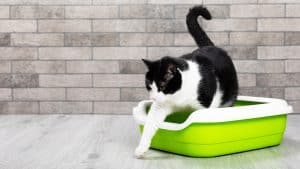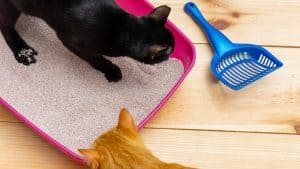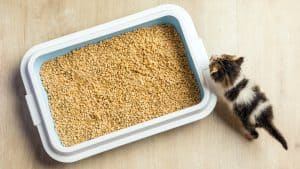Are you on a quest to master the art of maintaining non-clumping cat litter? You've reached the right place! We will cover the surprisingly intricate topic of cleaning non-clumping litter - specifically, how to clean pee from non-clumping litter.
You'll learn the 'why' behind the inability to scoop pee from non-clumping litter, and, more importantly, what to do instead. Additionally, we'll touch upon topics such as the optimal frequency of changing litter and preferred methods.
Packed with actionable insights and practical advice, this article is your one-stop guide to keeping your pet's bathroom space clean and comfortable. Let's dive right in, and remember - when it comes to non-clumping litter, cleanliness is next to cat happiness!
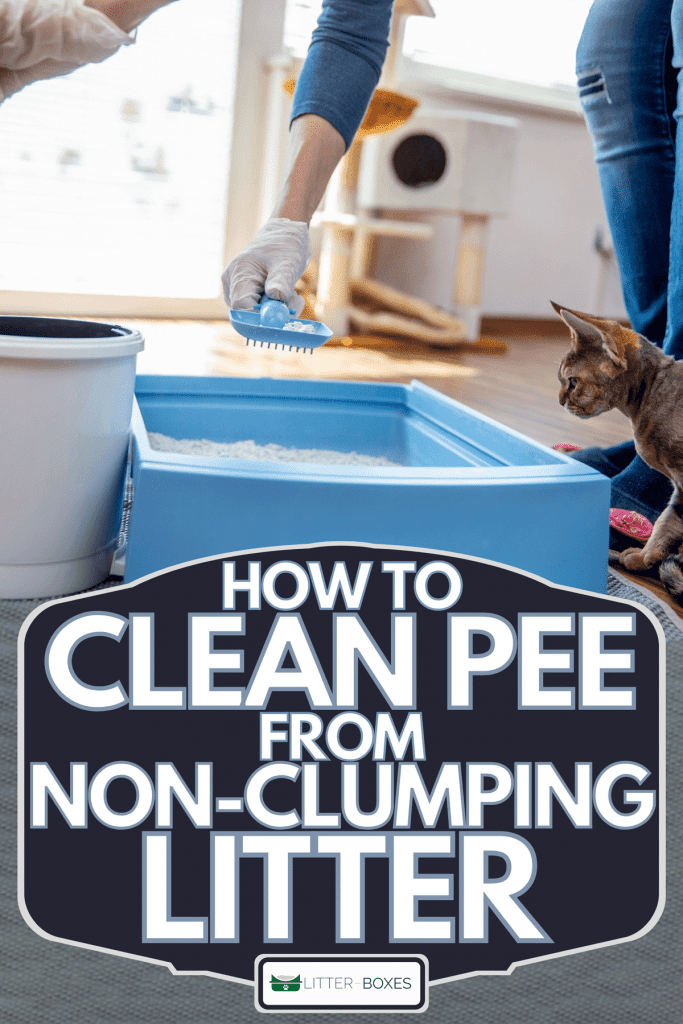
Navigating Non-Clumping Litter: The Owner's Manual
Unlike their clumping counterparts, non-clumping litters present a unique challenge. Yes, solid waste can be scooped out, but when it comes to pee, a simple scoop won't cut it. Here's the kicker - the entire litter needs replacing to eradicate pee.
But don't let that deter you. With a wealth of tips and tricks up your sleeve, you'll master the art of managing non-clumping litter in no time. Stay tuned as we get into the finer details of cleaning and frequency of litter replacement. Rest assured, there's much more to uncover in this insightful journey!
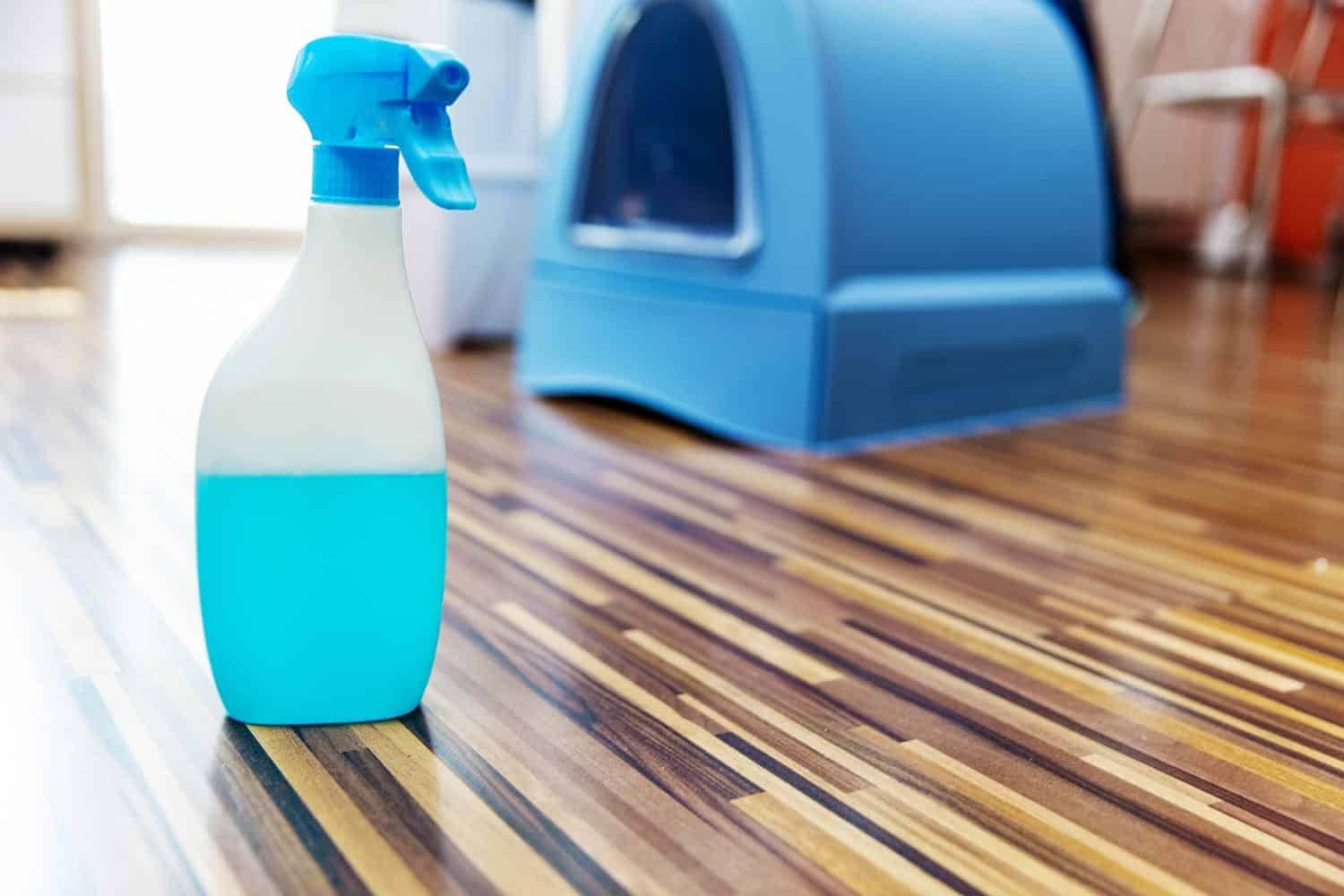
How To Clean Non-Clumping Litter
Keeping a tidy litter box keeps your cat happy and wanting to use their box. With non-clumping litter, you should check the box daily to evaluate if the litter needs to be changed.
Unkept litter boxes may upset your pet, motivating them to use the bathroom around the house. Inappropriate bathroom use can be upsetting for pet parents. So, how do you keep non-clumping litter clean?
To clean non-clumping litter, remove solids every day. Any solid stool can usually be removed with a scoop and placed in the trash. If you notice urine pooling in the bottom, it is time to change out your cat litter.
Click Here To See This Litter Scoop On Amazon
To change out your litter, dump the entire contents of your litter box into the trash. Next, wash out the bin with soap and water and dry it. Add 2-3 inches of non-clumping litter with your dry box and leave your cat to do its business.
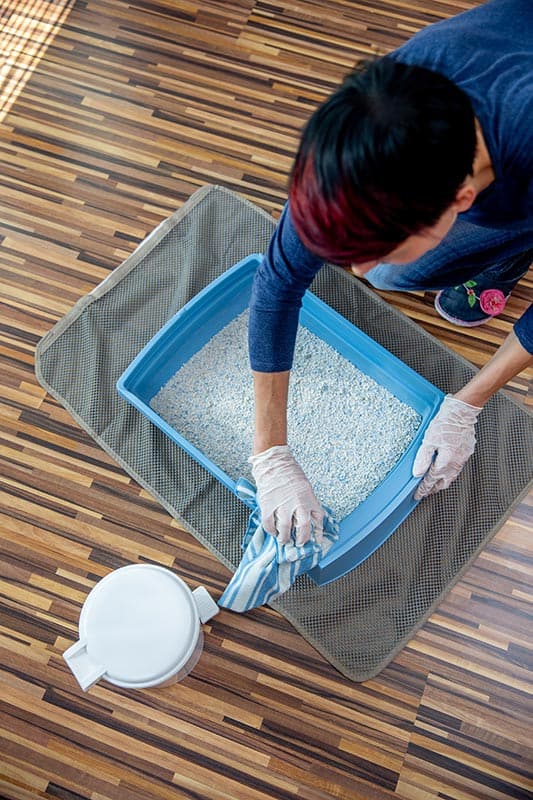
Furthermore, soaking your litter box in hot water for a few minutes without using soap or other detergents can be done if you have a sensitive pet. Using non-scented litter is ideal for our more sensitive pets as well.
You can wear gloves when changing out or cleaning your litter box to protect your hands. Those with respiratory issues may even use a face mask when cleaning high-dust litter.

Read more on our blog post, "Can You Scoop Non-Clumping Litter?"
How Often Should You Change Non-Clumping Litter
Even though urine won't clump in this litter, non-clumping litter does absorb urine. When you notice puddles of urine in the box, this means your litter has reached its limit for absorption.
On average, non-clumping litter should be changed once a week. This time frame may change slightly based on how many cats are in the household, how many litter boxes you have, and your cat's personal habits.
The variation in the expected time frame is why you need to check your litter box's status consistently. You can remove both urine and stool with clumping cat litter, meaning more time between complete litter changes.
Read more on our blog post, "How Often Should You Change Clumping Cat Litter?"
Why Is My Cat's Urine Not Clumping in the Litter?
With non-clumping litter, you shouldn't expect your cat's urine to clump. Remember, non-clumping litter absorbs urine rather than clumping it. The absorption captures the liquid and odor coming from urine.
Are you using clumping litter, and the urine is not clumping? If you are using litter that you expect to clump, and it's not, there could be a few reasons this is happening.
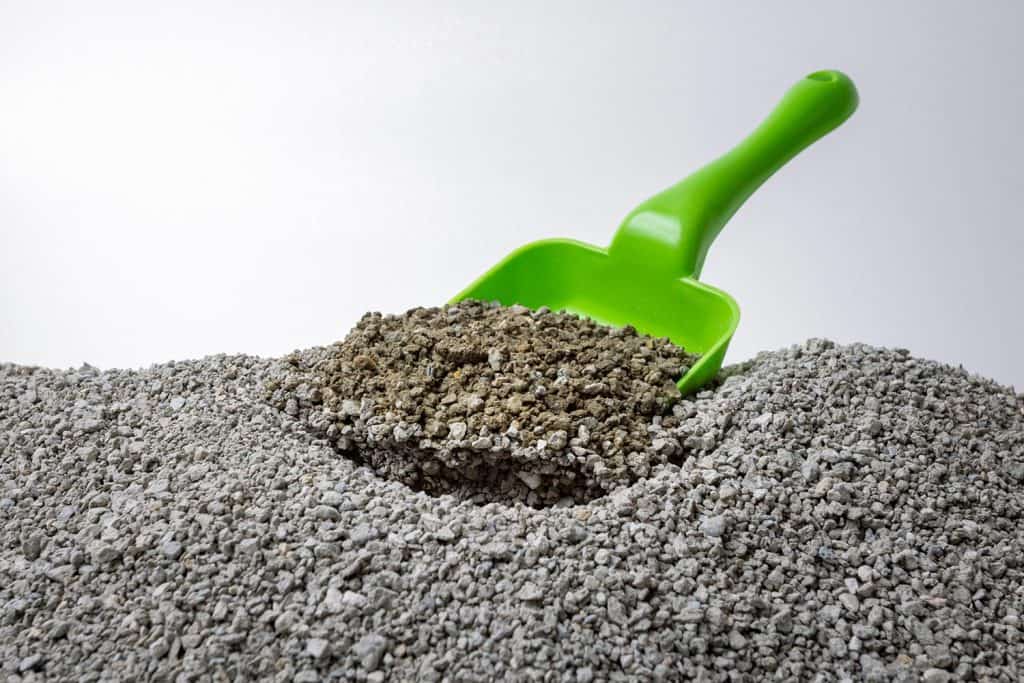
If your home is very humid, or there is a high amount of moisture in the air, this can prevent litter from clumping. Additionally, some cats scratch or often kick when they do their business.
This scratching or kicking can break up clumps, making it seem like the urine never clumped at all. Observe your cat's behavior in their box to rule out this possibility.
Additionally, clumping litter can stop working if it goes without being changed. After a couple of weeks, you'll need to change out your clumping cat litter to ensure it is fresh and working as it should.
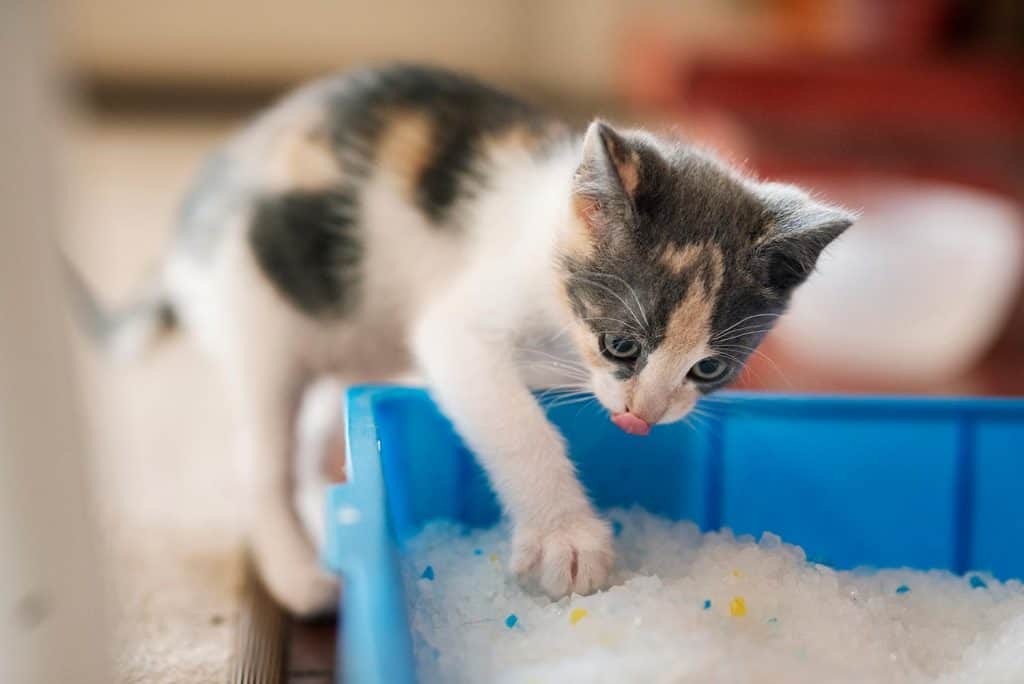
If your litter is not working as you hoped, you can experiment with different brands and types. With time and patience, you are sure to find a brand that works best for you and your furry friend.
Learn more on our blog post, "How Does Non-Clumping Clay Litter Work?"
Is Non-Clumping Litter Sanitary?
If taken care of properly, non-clumping cat litter is sanitary. Any type of litter can become unsanitary if it goes too long without being changed or cleaned out.
Some cat litters contain odor control elements, but this does not make one brand more sanitary than another. However, some clays that are used to make cat litter do contain antibacterial properties.
However, it is a litter box. Even in the most sanitary state, it is where your cat goes to the bathroom. Do not touch cat litter, then go on to touch your mouth, eyes, or other parts of your face.
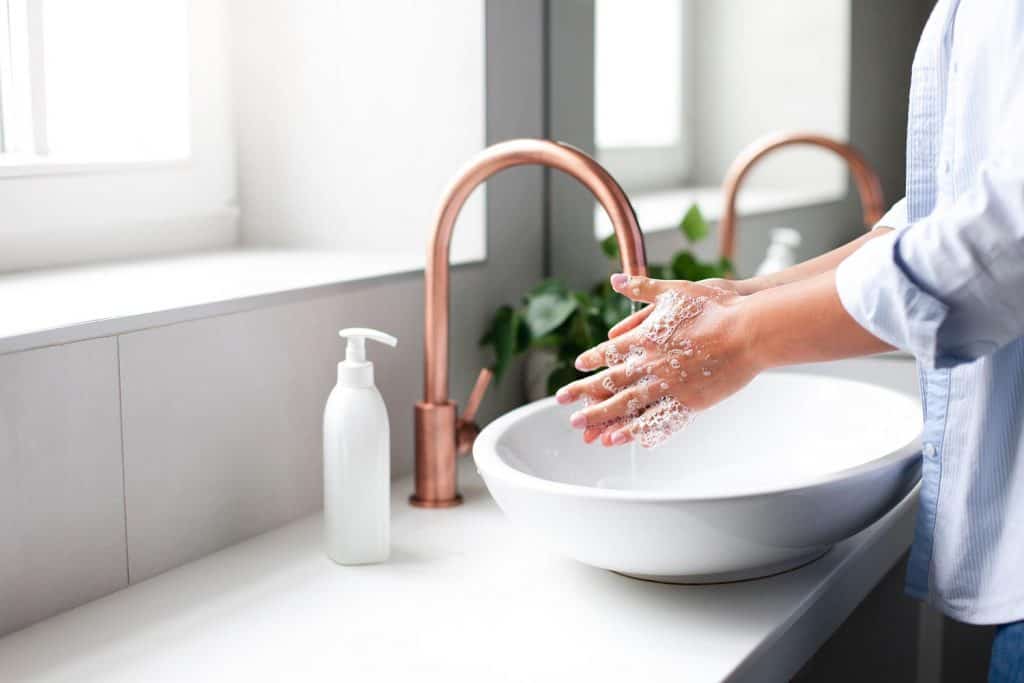
Cat feces can include harmful bacteria or other organisms. For this reason, always wash your hands after cleaning your cat's litter box. Do not allow other pets or children to go into or play with the cat litter.
Furthermore, some types of cat litter contain significant amounts of silica dust. This dust is toxic and can increase the chances of getting lung disease. Always use proper care and cleaning protocols when dealing with cat litter.
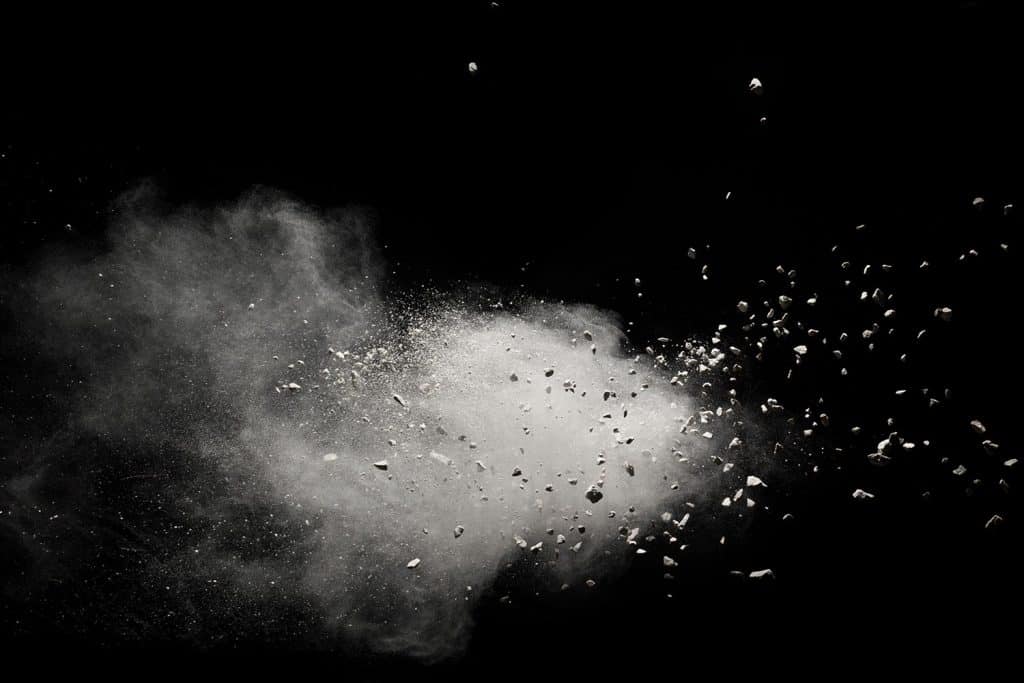
What Are The Benefits Of Non-Clumping Litter?
If you have to change non-clumping litter more often, you may wonder about the benefits of using this type of litter over others. There are quite a few benefits that pet owners look for.
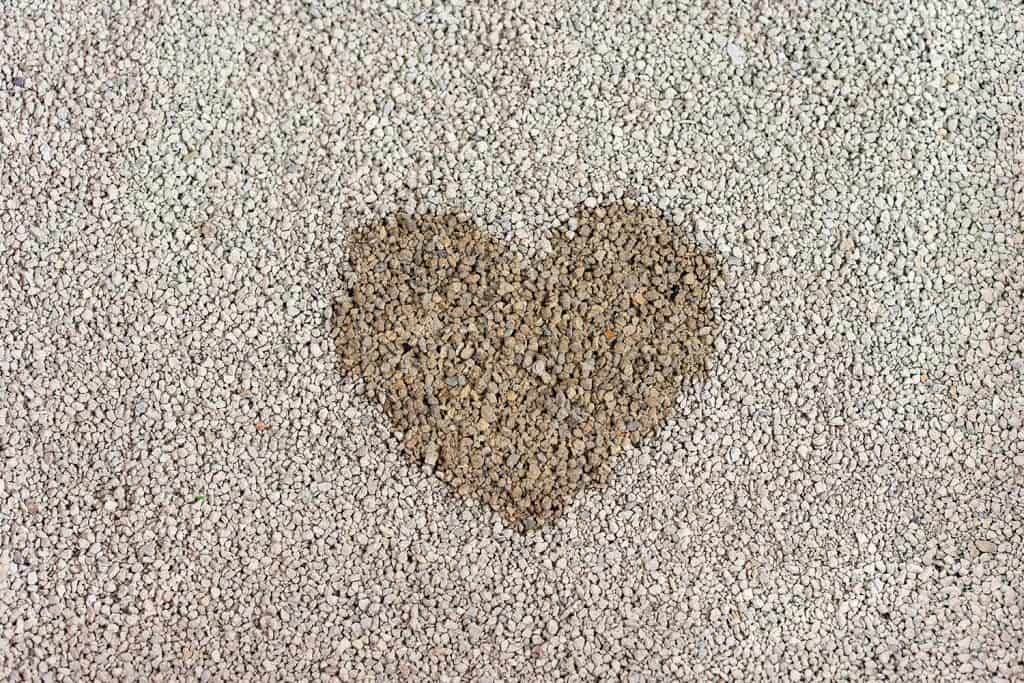
First, non-clumping litter has excellent odor control. The absorbent particles pick up odors and liquids better than other types of litter. Because the particles do not clump, they can absorb more significant volumes of moisture.
Next, pet owners appreciate the low cost of non-clumping litter. This type of litter is one of the oldest and most reputable kinds. First made available in 1947, non-clumping litter was the first commercially available cat litter after sand.
Last, non-clumping litter creates less dust. This characteristic is important for cats or humans in the house that may have respiratory issues. Litter dust can be irritable for the eyes, nose, ears, and respiratory system.
Susceptible cats can be turned off by high volumes of dust, creating an aversion to the litter box.
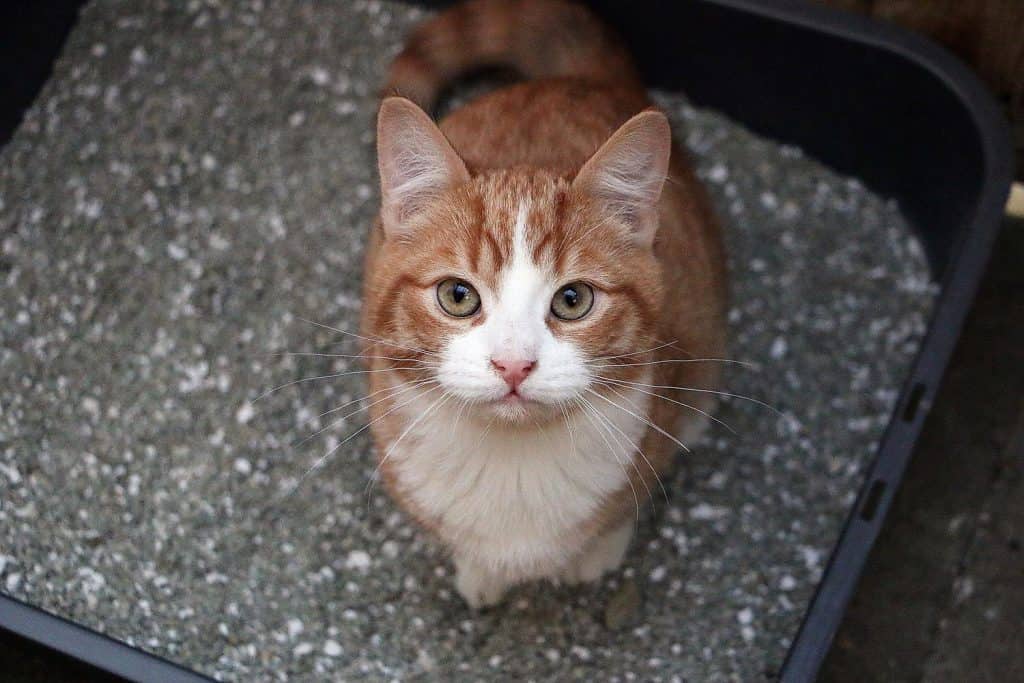
As you can see, there are many benefits to non-clumping litter. Buying seemingly more convenient products for our pets is not always what's best. Always do your research before buying products for your furry friend.
Do Non-Clumping Litters Come In Other Materials Besides Clay?
Another great benefit of non-clumping litters is that they come in a variety of environmentally safe materials. Clay litter does not break down and can't be recycled. The only way to properly dispose of them is in the trash.

However, non-clumping litter made from pine, corn, newspaper, and other organic materials, can break down in the environment. Natural litter does not give off any dust and is without any harmful chemicals or added fragrances.

Amazon offers a non-clumping litter made from pine pellets here
Organic litters are ideal for a sensitive pet or if you intend to go greener in general. Especially cats with allergies, asthma, or other respiratory issues, really benefit from using natural litter.
Sometimes buying natural or organic products can be pricey. Don't worry. Natural cat litters are less expensive than clay or clumping brands. This means you can decrease your carbon footprint while saving a little money.

Some even go the extra mile and compost their natural cat litter rather than disposing of them in the trash. This can be done using compost bins or hot compost methods. Then, use this compost to fertilize ornamental plants in your garden.
Learn more on our blog post, "Kitty Litter That You Can Actually Compost [3 Types Revealed]."
Putting It All Together: A Fresh Start for Your Litter Box
Here we are, at the end of our journey into the world of non-clumping cat litter. Along the way, we've explored the best practices, from scooping to cleaning. Now, it's time to summarize and apply our newfound knowledge.
Our hope is that this guide has given you the tools and confidence to tackle your non-clumping litter like a pro. After all, maintaining a clean and comfortable space for your pet is the ultimate goal.
It's the little things, like these cleaning tips, that can make a big difference in your pet care routine. So here's to you, and to the difference you're making in your pet's life every day. Keep up the great work!
Are you looking for more insights into cleaning your litter box? Have a look through our blog post, "27 Litter Box Cleaning Hacks That Will Make You Go Wow!"


